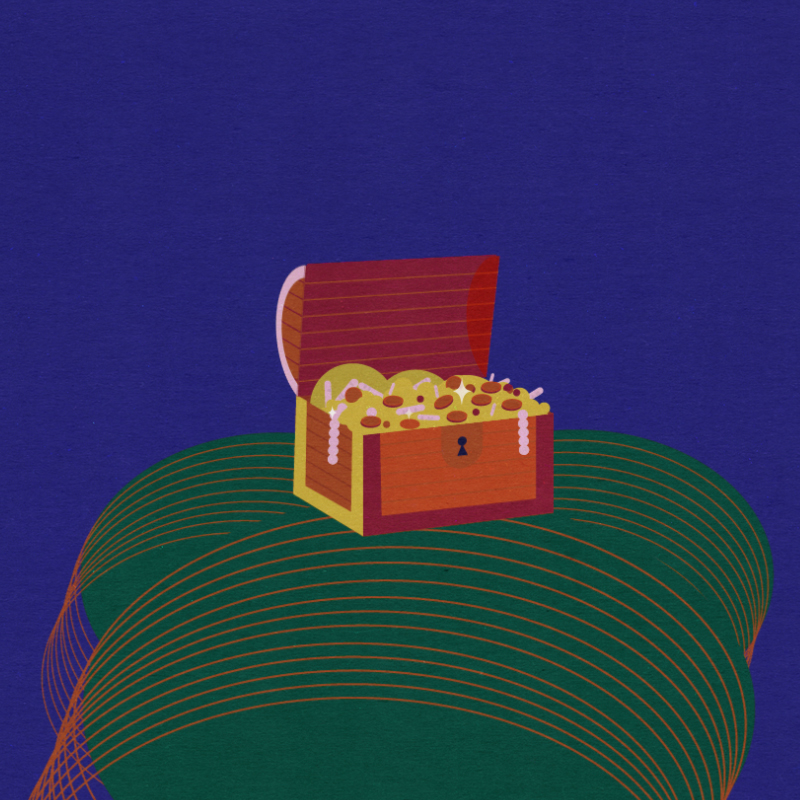Long Rods and Other Lithuanian Money
> BACK TO 100 STORIESToday, we use cash (banknotes, coins) to pay for things less and less – bank cards are much more convenient. But even if we can’t touch the money, we know how much we have in our account. Lithuanians currently count the euros. The euro is not Lithuanian money – it is the common currency of the European Union, which consists of twenty-seven countries. The euro was introduced to Lithuania in 2015, and until then various Lithuanian and foreign currencies were used in Lithuania. Money, like the flag, symbolises the values of the state, so when the country’s government changes, the state currency, or simply money, usually changes as well.
The first Lithuanian coins were minted in the fourteenth century. Until then, silver rods were used as money in Lithuania. These were called kapos because they were cut into smaller pieces if a good or service was worth less than a kopa, a medieval unit of measurement, which denoted 60 pieces or 5 dozens of whatever was counted. Today, we look for watermarks if we want to check whether money is real. The kapos were checked to see if there was enough silver in the rod: people looked at the colour and checked the density of the metal with their teeth. In the Grand Duchy of Lithuania (GDL), kapos were used until the end of Vytautas’ rule in 1430. They were a very reliable currency for large-scale international trade, and so they spread to neighboring countries. Even Lithuanian enemies, the Crusaders, used this money!
Although reliable, kapos were not suitable for small-scale trade: when paying for everyday goods or services, such as buying a hen, the kapa had to be cut into very small pieces, which was very inconvenient. Therefore, the Czech or Prague groschens were used as everyday money in the sixteenth and seventeenth centuries in the Grand Duchy of Lithuania – sixty groschens were worth one Lithuanian kapa. The first Lithuanian coins, called silver pennies, or denars, were even smaller – one groschen was worth ten denars.
The end of the nineteenth and the beginning of the twentieth century was a very difficult period for Lithuania: the country was occupied by tsarist Russia, then Germany, then the Soviet Union, Nazi Germany, and finally the Soviets again. During this period, money in Lithuania changed according to which country had occupied Lithuania.
When the independent state of Lithuania was restored in 1918 the government decided to revive Lithuanian money. For a long time, there was no consensus on what the new money should be called. Among the possible names were a number of strange-sounding options: muštinis, auksinas, muštas, doleris, kaltas, kirptukas, lietas. The name of litas was proposed by Vaclovas Vaidotas, the Secretary of the Economic Commission. The Constituent Assembly of Lithuania, which considered the issue of money, unanimously approved this option. The litas was declared the national currency of Lithuania on 1 October 1922. Lithuanians didn’t use litas to pay for goods and services for long: when Soviet Russia occupied Lithuania in 1940, Soviet rubles were introduced.
Lithuania’s independence was restored in 1990. The Bank of Lithuania was established, and it decided to revive the national currency. This process took place gradually. In 1991, the so-called coupons – temporary money, decorated with images of animals and birds – were introduced along the ruble. One coupon was worth one ruble. On 25 June 1993, the litas banknotes and coins, and cent coins were put into circulation. Litai were used in Lithuania until 2015 when they were replaced by euros.

